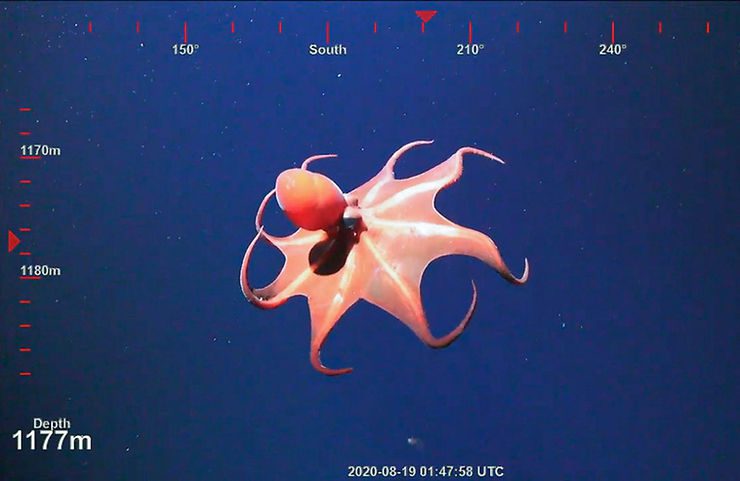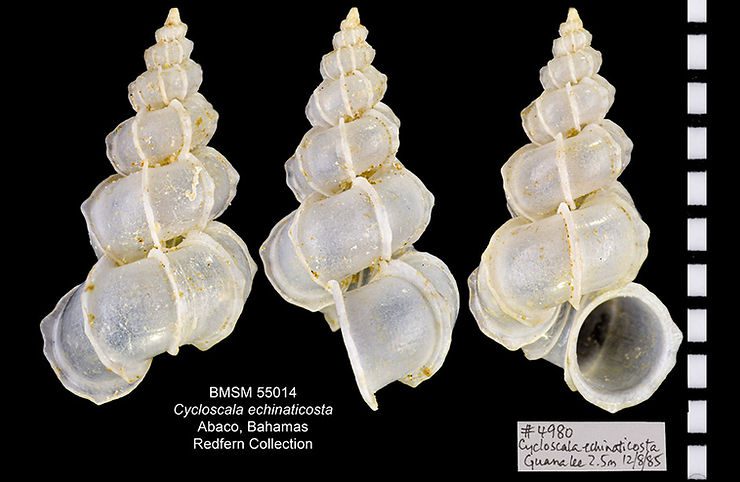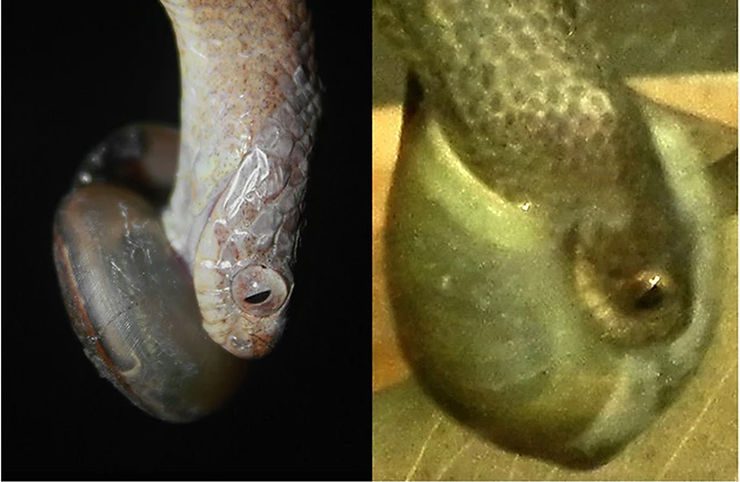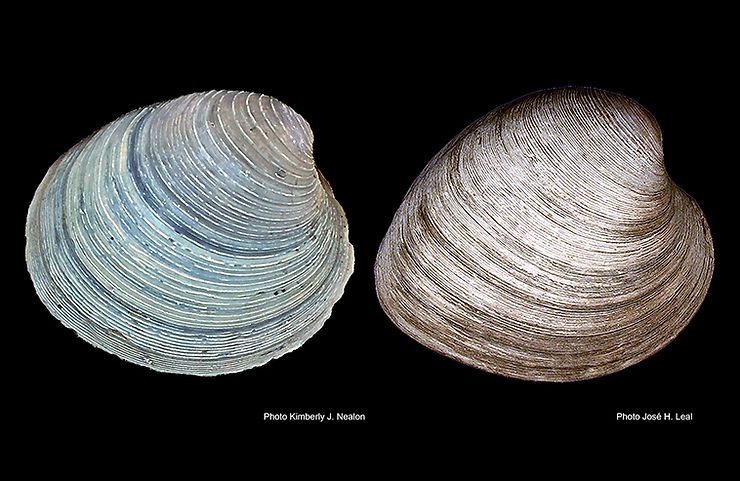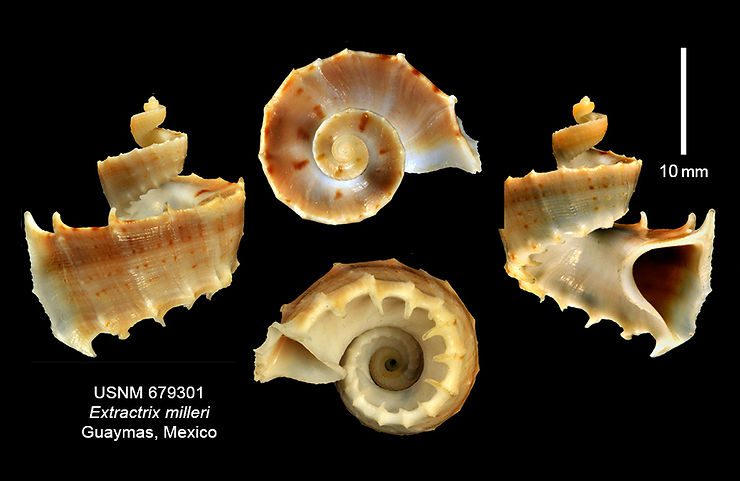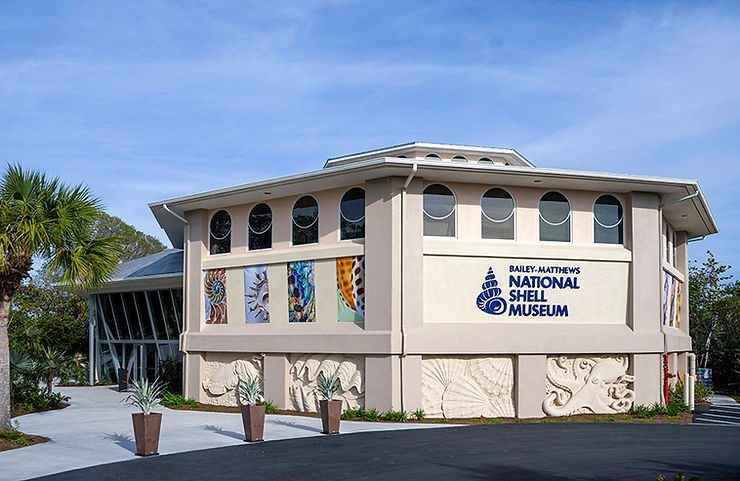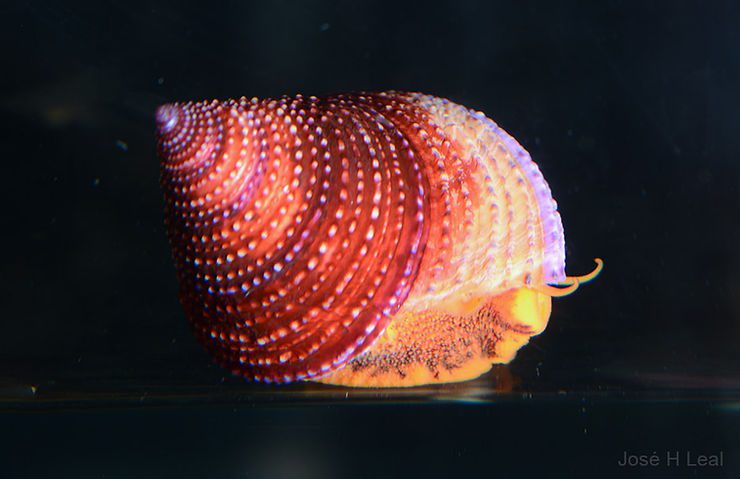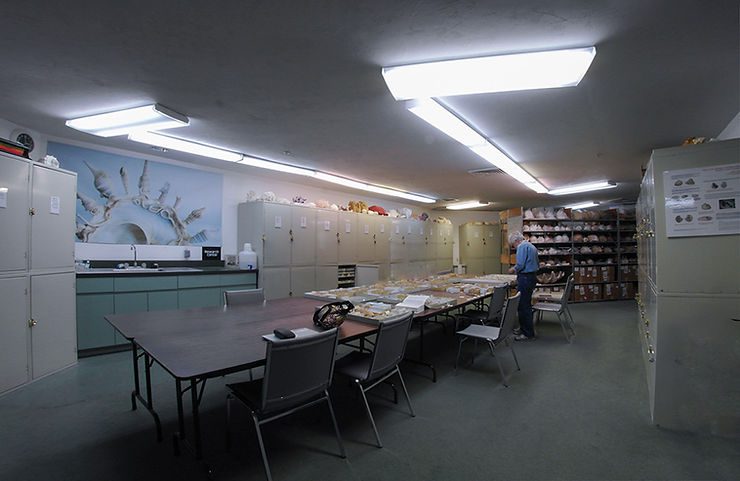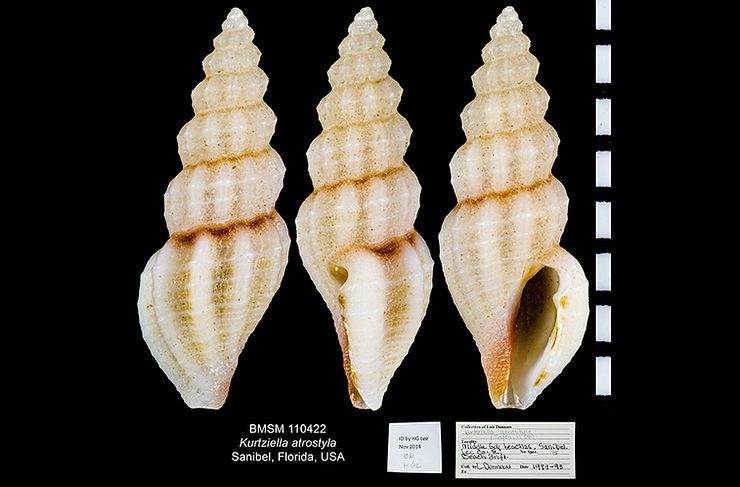
Shell of the Week: The Brown-tip Mangelia
Kurtziella atrostyla (Tryon, 1884) is a relatively common gastropod along both coasts of Florida. Its elongate shell may have up to 7–8 whorls, reaches only about 9 mm (about 0.36 inch), and is decorated with 8–10 axial (lengthwise) ribs and fine spiral (“across-shell”) striations. The shell is white, with reddish-brown suture (area where two whorls join) and inner part of the aperture (“opening”). #kurtziellaatrostyla #mangeliidae #spiral #axial #mageliidae
